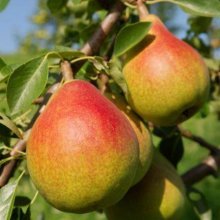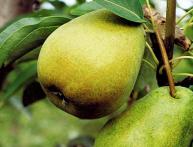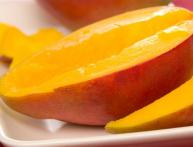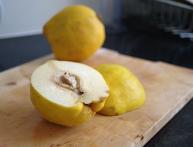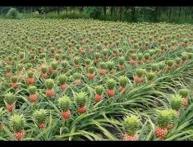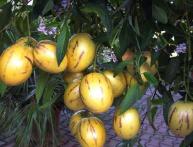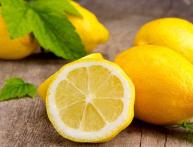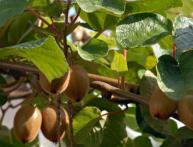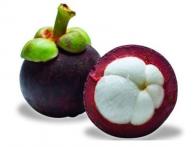Duchess pear: cultivation and use of fruits

The English pear duchess has gained good fame far beyond the borders of her country. It gained worldwide fame and the love of breeders thanks to such qualities as rich taste, attractive appearance, unpretentiousness in cultivation, long shelf life and the possibility of processing. It can be grown both in a personal plot and on a large industrial scale.
Content:
History of the variety and species
As already mentioned, Duchess comes from England, or rather, from Berkshire. Back in 1796 this variety pears were bred by the breeder Wheeler. However, he owes his popularity to another person named Williams. Thanks to him, this species has spread throughout the world.
There are two types of duchess:
Summer Duchess
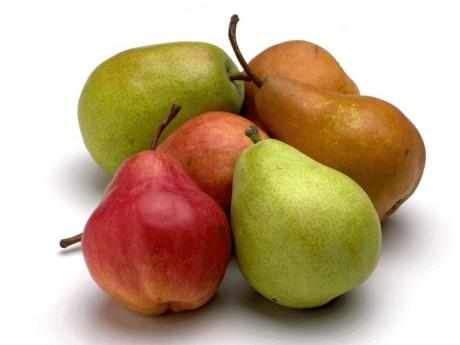
Duchess is unpretentious, so it grows on soil with any composition. However, to achieve a large harvest, the land must be fertile and provided with abundant moisture. A significant advantage of this pear variety is that it is almost not susceptible to scab. However, it can become a tasty morsel for aphids and copperheads. A fairly common opinion is that Duchess fruits acquire a unique sweet taste on dry soil.
Duchess is a self-sterile variety. Therefore, it requires pollinators. Her relatives are suitable for this role:
- Kappa's pet
- Pass Krassan
- Forest beauty
- Bere Bosc
- Olivier de Seur
- Bere Ardanpont
Duchess begins to bloom late.However, this period lasts quite a long time. Inflorescences are usually of medium size. They are little susceptible to adverse weather conditions. The harvest is produced in the fifth or sixth year after planting.
It’s not for nothing that Duchess is a standard among others pear varieties. It has almost no small fruits, only medium and large ones. Their weight on average ranges from 150 to 200 grams. And from one tree you can harvest a crop weighing up to 250 kilograms.
The summer type of duchess has a slightly oblong shape, its surface is lumpy. The skin is usually thin and shiny, and has a fragrant aroma. When ripe, it turns yellow with small black dots. The pulp of summer duchess is very sweet with a characteristic nutmeg flavor; it simply melts in your mouth.
Duchess is usually harvested in mid-August. The fruits can be stored for up to two weeks. Therefore, they tolerate transportation well. In the refrigerator, pears remain fresh for up to a month and a half.
Duchess is widely used for making desserts. It can be used for compotes. It is also perfect for preservation. The fruits can be dried. At the same time, they will not lose their taste.
Winter Duchess
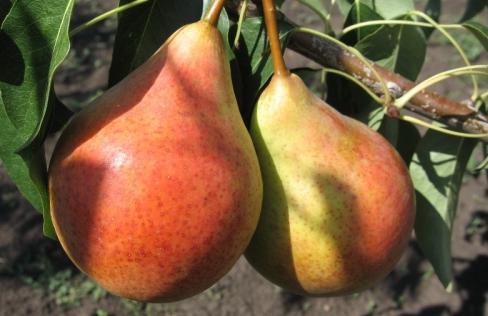
This variety has Belgian roots. It is similar to the summer variety, and mainly differs only in the timing of ripening. We'll talk about other differences below.
One of the main advantages of the culture is cold resistance. Good harvest it produces on fertile and light soil or in areas well protected from the wind. But in cold and damp summers, duchess can be affected by scab. The result of this is that the fruits lose their taste.
Like summer duchess, winter duchess is self-sterile. Pollinators can be:
- Olivier de Serres
- Williams
- Bere Ardanpont
If summer duchess begins to bear fruit quite early, then winter duchess usually bears fruit in the sixth or seventh year. Pears also ripen late - during the autumn leaf fall in October. They ripen until December. If you pick it earlier, you will lose all the taste and beneficial properties. From one tree you can harvest up to one hundred kilograms of harvest. In a cool place they can be stored for a long time, survive the winter and remain fresh until April and May.
Ripe pears usually have large sizes. Some of them can reach 600 grams. The skin is smooth, has a yellow tint and a beautiful blush. The pulp of duchess is sweet, tender and melts in the mouth and has a slightly sour taste.
Like summer duchess, winter duchess is used for making desserts. Compotes, preserves, and jams are made from it. It is used to make marmalade, wine and candied fruits.
The fruits are actively used in folk medicine to treat various diseases.
Duchess is a necessary ingredient in the production of medicines for acute respiratory infections, as well as bronchitis.
We told you about two types of duchess pears. There are no fundamental differences between them; they both have excellent taste and have a wide range of applications. They are unpretentious, and they can be grown both in small garden plots and on large areas of land.
Educational video about planting a pear:
Interesting information about the vegetable garden


